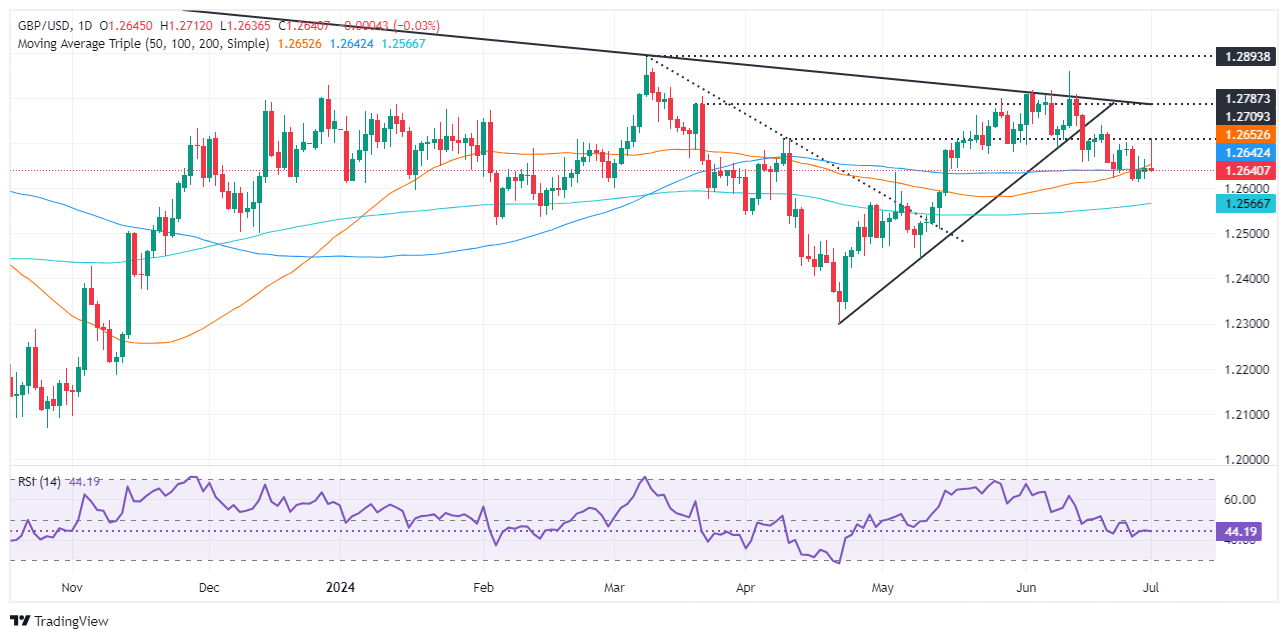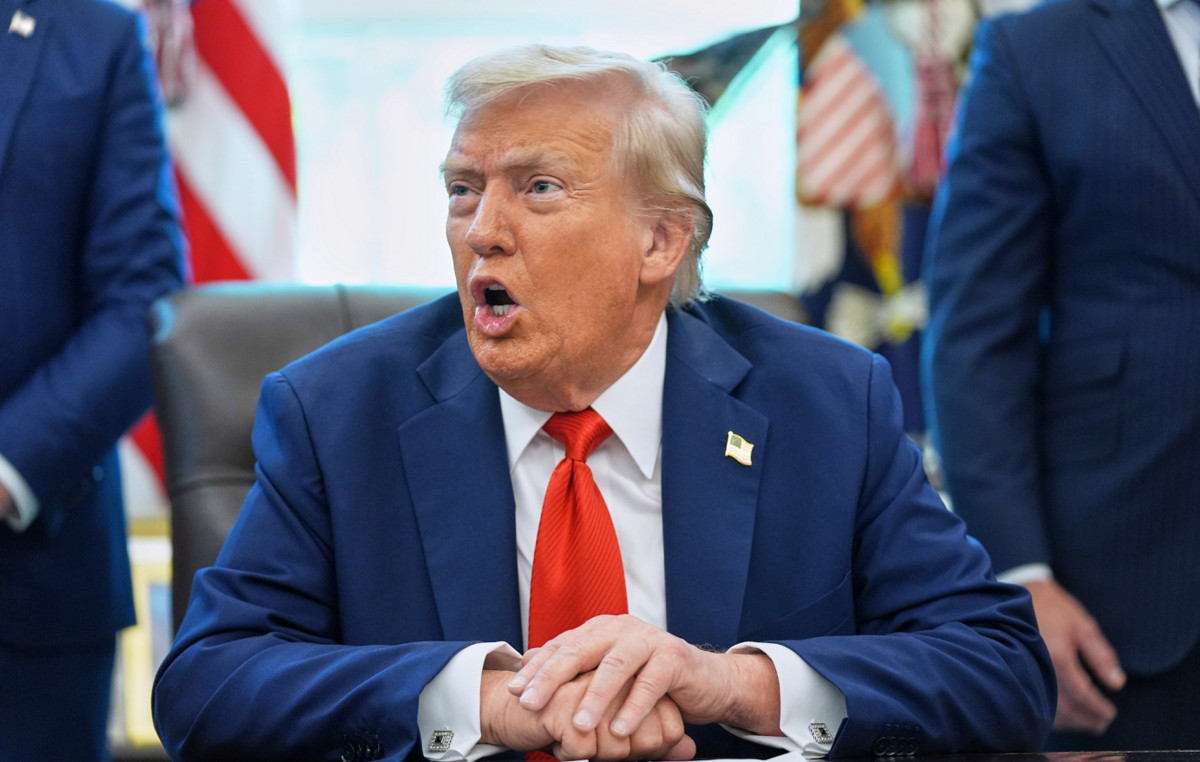- GBP/USD falls as concerns over a possible US recession weigh on markets.
- Technical aspects suggest a neutral to bearish bias, marked by lower highs and lower lows.
- Support Levels: 1.2600 (Daily Moving Averages), 1.2560 (200 DMA), 1.2500, 1.2445 (May 9 low), 1.2299 (Yearly low).
- Resistance points: 1.2700, 1.2750, 1.2800, 1.2868 (June 12 high).
The British Pound erased earlier gains during Monday’s session against the Dollar, even though US economic data showed the economy is slowing. Based on the market reaction to the data, concerns about a US recession can be seen looming as US stocks fell, along with the US Dollar, as market participants await US employment data. USA on Friday. GBP/USD is trading at 1.2643, down 0.01%.
GBP/USD Price Analysis: Technical Perspective
Technically speaking, GBP/USD has a neutral-to-bearish bias, as seen by a successful series of lower lows and lower lows, dragging the pair from the yearly highs of 1.2894 towards the current exchange rates. However, although lagging, the daily moving averages (DMAs) are capping the pair’s downside around 1.2600, which, once cleared, could pave the way for further decline.
In that case, the next GBP/USD support would be the 200-DMA at 1.2560, followed by 1.2500 ahead of the May 9 cycle low of 1.2445. A break of the latter will expose the yearly low of 1.2299.
On the other hand, if buyers recapture 1.2700, the next resistance would be 1.2750. Once this hurdle is cleared, the next stop would be 1.2800 before challenging the June 12 high of 1.2868.
GBP/USD Price Action – Daily Chart
The British Pound FAQs
The British Pound (GBP) is the oldest currency in the world (886 AD) and the official currency of the United Kingdom. It is the fourth most traded currency unit in the world, with 12% of all transactions and an average of $630 billion per day, according to 2022 data.
Its key currency pairs are GBP/USD, also known as “Cable”, which represents 11% of the forex market, GBP/JPY, or the “Dragon” as it is known to traders (3%), and EUR/GBP (2%). The pound sterling is issued by the Bank of England (BoE).
The most important factor influencing the value of the British Pound is the monetary policy decided by the Bank of England. The Bank of England bases its decisions on achieving its main objective of “price stability”, i.e. a stable inflation rate of around 2%. Its main tool for achieving this is the adjustment of interest rates.
When inflation is too high, the Bank of England tries to contain it by raising interest rates, making credit more expensive for individuals and businesses. This is generally positive for the GBP, as higher interest rates make the UK a more attractive place for global investors to park their money.
When inflation is too low, it is a sign that economic growth is slowing. In this scenario, the BoE will consider lowering interest rates to make credit cheaper, so that companies borrow more to invest in growth-generating projects.
The published data gauges the health of the economy and may influence the value of the Pound sterling. Indicators such as GDP, manufacturing and services PMIs, and employment can influence the direction of the Pound.
A strong economy is good for the British Pound. Not only does it attract more foreign investment, but it may encourage the Bank of England to raise interest rates, which will directly strengthen the British Pound. Conversely, if economic data is weak, the British Pound is likely to fall.
Another significant indicator for the pound is the trade balance. This indicator measures the difference between what a country earns from its exports and what it spends on imports during a given period.
If a country produces highly sought-after exports, its currency will benefit exclusively from the additional demand created by foreign buyers wishing to purchase these goods. Therefore, a positive net trade balance strengthens a currency and vice versa for a negative balance.
Source: Fx Street
I am Joshua Winder, a senior-level journalist and editor at World Stock Market. I specialize in covering news related to the stock market and economic trends. With more than 8 years of experience in this field, I have become an expert in financial reporting.








